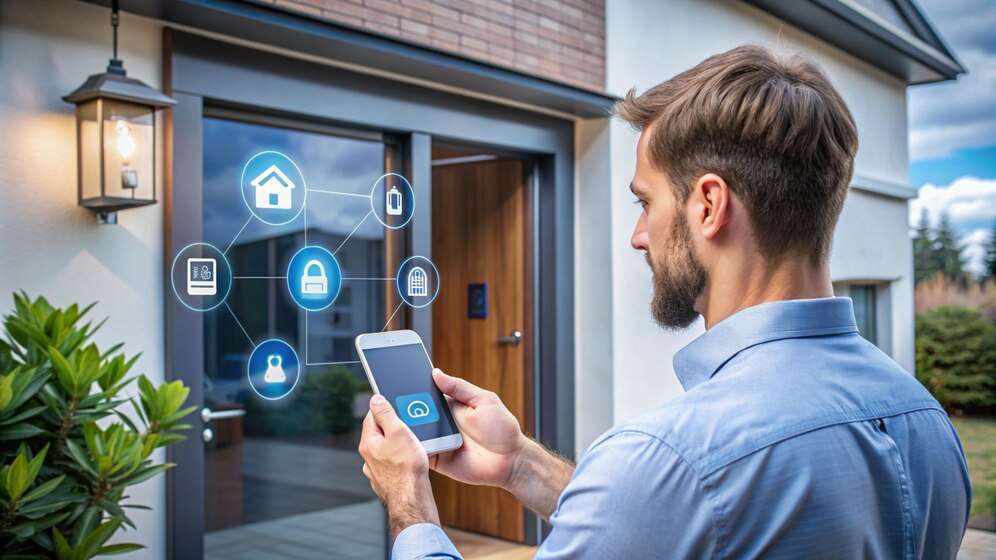Smart Home Systems have become more than just a trend—they’re a lifestyle upgrade. These systems allow homeowners to control lighting, security, temperature, and even appliances from a smartphone or voice assistant. As more people seek convenience and energy efficiency, Smart Home Systems are growing in popularity across the globe.

Understanding the basics of Smart Home Systems is the first step to transforming your house into a smarter, more efficient living space. From choosing compatible devices to ensuring proper installation, the process may seem overwhelming at first. However, with the right information, you’ll find that Smart Home can significantly enhance your quality of life.
What Are Smart Home Systems?
Definition and Core Components
Smart Home refer to a network of interconnected devices that automate and control various aspects of your home. These systems typically include smart speakers, thermostats, lighting, door locks, cameras, and more. The goal of Smart Home is to make daily tasks easier and more efficient through automation and remote access.
At the heart of most Smart Home is a central hub or app that allows users to manage all connected devices. This control center enables homeowners to customize settings, schedules, and even monitor energy usage. Whether it’s adjusting the lights or setting the thermostat, Smart Home put control at your fingertips.
How Do Smart Home Systems Work?
Connectivity and Integration
Smart Home function by connecting devices to the internet, usually through Wi-Fi, Zigbee, or Bluetooth. These connections enable devices to communicate with each other and respond to user commands. Through seamless integration, Smart Home ensure that all devices work in harmony to serve your needs.
For example, a smart thermostat can signal smart blinds to close when the temperature rises, or a motion sensor can trigger lights and cameras. This level of automation is only possible through the interconnectivity of Smart Home . The better the integration, the more efficient and responsive your system becomes.
Benefits of Smart Home Systems
Convenience, Efficiency, and Security
One of the most notable advantages of Smart Home is the convenience they bring into everyday life. Imagine adjusting your home’s temperature before arriving or locking your doors remotely—these tasks become effortless. With Smart Home , managing your household is no longer a chore.
In addition to convenience, Smart Home improve energy efficiency by optimizing how and when devices operate. Smart lighting and thermostats can significantly reduce electricity usage over time. Lastly, many homeowners invest in Smart Home for enhanced security through features like smart cameras, doorbells, and motion detectors.
Choosing the Right Smart Home System
Factors to Consider Before Buying
Selecting the ideal Smart Home for your home involves understanding your specific needs and preferences. Compatibility with existing devices, budget, ease of use, and expandability are key considerations. A good Smart Home should integrate smoothly into your lifestyle without requiring major changes.
Brand reputation and customer support are also important when choosing Smart Home . Some ecosystems, like Google Home, Amazon Alexa, or Apple HomeKit, offer broader compatibility and better software updates. Doing your research ensures you invest in Smart Home that offer long-term reliability.
Installation and Setup
DIY vs. Professional Installation
Many Smart Home are designed for easy DIY installation, with intuitive apps and step-by-step guides. Devices like smart plugs or light bulbs can be installed in minutes without technical skills. However, more complex Smart Home Systems such as integrated security networks may benefit from professional setup.
Professional installers can ensure your Smart Home are configured correctly for optimal performance. They can also provide guidance on system expansion or troubleshooting. Whether you choose DIY or professional help, ensuring a solid setup is essential for getting the most out of Smart Home.
Potential Challenges and Solutions
Common Issues and Fixes
Despite their many advantages, Smart Home may face challenges like connectivity problems or software bugs. Devices might occasionally disconnect or fail to respond due to Wi-Fi interference. However, these issues can usually be resolved by rebooting the hub or updating device firmware.
Another common challenge is compatibility between different brands and platforms. Some Smart Home work best within their own ecosystem, which can limit your options. Choosing a flexible platform and reading compatibility lists can prevent these issues and lead to a smoother experience with Smart Home.
The Future of Smart Home Systems
Innovation and What to Expect Next
The future of Smart Home looks promising, with ongoing advancements in artificial intelligence and machine learning. These technologies will make systems more intuitive, allowing for predictive automation based on user behavior. In the near future, Smart Home could anticipate your needs before you even make a request.
Additionally, improvements in sustainability and energy tracking will make Smart Home more eco-friendly. Innovations like solar integration and smart water management are already making their way into the market. As technology evolves, expect Smart Home to become more affordable, accessible, and intelligent.
Conclusion
Smart Home Systems are transforming the way we live by offering convenience, security, and efficiency. From basic smart bulbs to full-home automation, the possibilities are endless. As you explore the world of Smart Home, you’ll discover how much easier and smarter your life can become.
With careful planning and the right setup, anyone can enjoy the benefits of Smart Home. Whether you’re just getting started or looking to upgrade, this guide has everything you need to know. Make the smart choice today—invest in Smart Home and embrace the future of home living.